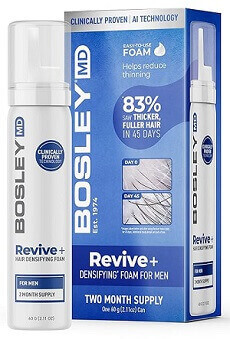Mitochondria are the powerhouse of every cell in the human body. I am surprised at how little importance hair loss researchers have given to this important subject.
Update: April 18, 2025
Mitochondrial Pyruvate Carrier
Scientists from the University of Cambridge (UK) have discovered how a molecular machine inside mitochondria enables cells to generate energy from sugars. The team uncovered the structure and function of the mitochondrial pyruvate carrier (MPC) at the atomic level. While the study itself does not mention hair loss, a summary of the study discusses how inhibition of mitochondrial pyruvate carrier may reverse hair loss via an increase in lactate. What they are likely discussing is the much anticipated Pelage Pharmaceuticals’ PP405 inhibitor of mitochondrial pyruvate carrier.
Update: April 16, 2025
Atticus Pharma Initiates Human Clinical Trial for ATC-002
Atticus Pharma (US) recently announced that it was initiating a human clinical trial for its ATC-002 topical product for androgenetic alopecia (h/t “John Doe”). ATC-002 is a proprietary product that delivers a mitochondrial-activating molecule using Atticus’s Z-pod sustained-release technology.
On the company’s website, they call this trademarked product Y200. It is a purified extract from a tree found in southeast Asia that has been shown to impact mitochondrial function. However, it has poor skin absorption, and it is hoped that using Z-pods as a sustained release delivery mechanism improves the effect. The company is also testing a more abundant “sister” product called Y100 that has already proved to be effective at growing and thickening hair in a small 34-patient study.

Update: May 2024 — Yuva Biosciences (in partnership with Bosley) has come out with a new hair loss foam product that restores mitochondrial function.
Update: June 2022 — A new study from Singapore finds that there is altered dermal papilla mitochondrial function in androgenetic alopecia. Balding dermal papilla cells were also found to be under significantly higher oxidative stress than non-balding dermal papilla cells.
October 10, 2018
Note that mitochondria is the plural of the actual organelle known as mitochondrion.
To date, I have only covered this important subject twice on this blog. Moreover, both instances only occurred earlier this year.
- In August 2018, I discussed an important new discovery in relation to mitochondrial repair resulting in hair regrowth and skin wrinkling reversal in mice. Those findings and associated photos were widely discussed by the global media.
- In February 2018, I discussed some interesting findings from Singapore that covered the link between mitochondria, metabolism and hair growth.
New Mitochondrial Hair Treatment Patent
Yesterday, someone on Twitter messaged me about a highly interesting new patent application from Israel. This patent was filed on March 22nd, 2018 and was published on October 4th, 2018.
The scientists involved seem to be highly qualified. All have high levels of education, have started their own companies, and have many patents to their names:
- Natalie Yivgi-Ohana (Ph.D in Biochemistry)
- Uriel Halavee (Ph.D in Chemical Physics)
- Shmuel Bukshpan.
Going back to this particular patent, the scientists make numerous claims in regards to hair loss reversal, new hair growth, hair follicle size and cycle elongation, hair cell proliferation and more. The main method for doing so seems to be via:
“Administering a composition comprising an effective amount of about 1 μg/ml to about 100 μg/ml of intact mitochondria, ruptured mitochondria and/or mitochondrial constituents selected from the group consisting of mitochondrial protein, mitochondrial nucleic acid, mitochondrial lipid and mitochondrial saccharide.”
Writing this post at 11pm, you will have to forgive me for not putting in the effort to try to figure out any further details regarding the above (or the rest of the lengthy patent). Hopefully, the few scientists among this blog’s commentators will do the hard work if it is deemed worth the effort.
